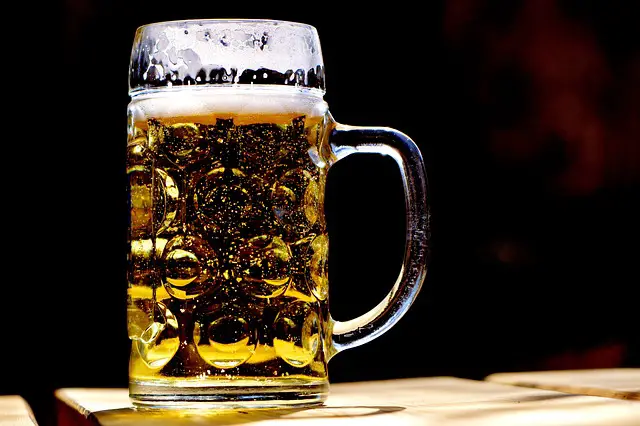When it comes to indulging in a delightful drink, the options can seem endless. But for those carb-conscious individuals out there, knowing where your beloved beverages stand on the carbohydrate scale is crucial. Today, we turn our attention to two beloved libations: sake and wine. Often enjoyed together with a delectable meal or on their own, these drinks each hold their own unique charm. But how do they fare when it comes to carbs? In this insightful article, we will dive into the world of carbs in sake vs wine, examining their carbohydrate contents to help you make an informed choice without compromising your dietary goals. So grab a glass, sit back, and let’s get down to some carb-related facts that will surely add a new level of knowledge to your next toast!
Obsah
- – Understanding the Role of Carbohydrates in Sake and Wine
- Understanding the Role of Carbohydrates in Sake and Wine
- – Comparing Carbohydrate Contents: Sake vs. Wine
- Comparing Carbohydrate Contents: Sake vs. Wine
- – Unveiling the Secrets: Carb Breakdown in Sake and Wine
- – Making Informed Choices: Recommendations for Carb-Conscious Drinkers
- Closing Remarks
– Understanding the Role of Carbohydrates in Sake and Wine
Understanding the Role of Carbohydrates in Sake and Wine
Carbohydrates play a vital role in the production and flavor profile of both sake and wine. These complex molecules are responsible for the sweet taste and mouthfeel commonly associated with these beloved beverages. Let’s dive deeper into the fascinating world of carbohydrates and uncover their significance in sake and wine.
Sake: In traditional sake brewing, rice serves as the primary source of carbohydrates. During the fermentation process, rice starches are broken down into simple sugars, such as glucose and maltose, through enzymatic reactions. These sugars are then converted into alcohol by yeast, resulting in the unique flavor profile of sake. The residual sugars left behind after fermentation determine the sweetness level of the final product, ranging from dry to sweet. Sake with higher carbohydrate content tends to have a richer, sweeter flavor, while those with lower carbohydrates are lighter and drier.
Wine: Carbohydrates in wine primarily come from the grape juice used during production. Grapes contain natural sugars, such as glucose and fructose, which provide the necessary fuel for yeast to ferment into alcohol. During the winemaking process, yeast converts these sugars into ethanol, carbon dioxide, and other flavor compounds. The amount of residual sugar left in the wine after fermentation greatly influences its taste. Wines with higher carbohydrate content, such as late-harvest or dessert wines, often exhibit a luscious, sweet flavor. Conversely, dry wines have lower carbohydrate levels, resulting in a crisp and less sweet taste.
– Comparing Carbohydrate Contents: Sake vs. Wine
Comparing Carbohydrate Contents: Sake vs. Wine
When it comes to enjoying a drink, be it a glass of Sake or a glass of wine, many of us are curious about what goes into our favorite beverage. Carbohydrate content is one aspect that often sparks interest, especially among those watching their sugar intake. Let’s delve into the comparison between sake and wine in terms of their carbohydrate contents, shedding light on which is the better option for those looking to indulge while being mindful of their carb intake.
Sake, a traditional Japanese rice wine, is known for its delicate flavor profiles and smooth texture. Surprisingly, sake contains very little carbohydrates, making it an excellent choice for those on a low-carb or keto diet. On average, a standard serving of sake contains only around 3 grams of carbohydrates. This low carbohydrate content is primarily due to the way sake is brewed, where the rice starches are converted into alcohol, resulting in minimal residual sugar.
Carbohydrate Content:
- Sake: Approximately 3 grams of carbohydrates per serving.
- Wine: Can range from 3 to 6 grams of carbohydrates per serving.
Now, let’s turn our attention to wine. While there is some variation, wine generally contains a slightly higher carbohydrate content compared to sake. Depending on the type and sweetness of the wine, a standard serving can have anywhere from 3 to 6 grams of carbohydrates. These carbohydrates primarily come from the natural sugars present in the grapes used to produce the wine. It’s worth noting that sweeter wines, such as dessert wines, tend to have a higher carbohydrate content due to the added sugars.
Considering the carbohydrate content alone, sake proves to be the lower-carb option when compared to wine. However, it’s important to keep in mind that moderation and personal preferences should also play a role in your drink choices. Both sake and wine can be enjoyed responsibly as part of a balanced lifestyle, and opting for the one that aligns with your taste preferences is always a good idea.
– Unveiling the Secrets: Carb Breakdown in Sake and Wine
Carb Breakdown in Sake:
Sake, a traditional Japanese rice wine, often causes confusion when it comes to its carbohydrate content. Contrary to popular belief, sake is not carb-free! While it may not be as carb-laden as a pint of beer or a glass of sweet wine, it still contains notable amounts of carbohydrates. The carbs in sake primarily come from the rice used during the fermentation process. As the rice starch is converted into alcohol by yeast, a small portion remains unfermented, resulting in residual sugars and carbs. On average, a standard serving of sake contains around 4 grams of carbs, making it a relatively light option for those watching their carb intake.
Carb Breakdown in Wine:
Wine enthusiasts rejoice! Wine, be it red, white, or rosé, generally has low to moderate carbohydrate content, making it a favorable choice for those on a low-carb diet. Most of the carbohydrates in wine come from the grapes themselves. During the fermentation process, the yeast consumes the natural grape sugars, converting them into alcohol. As a result, dry wines tend to have lower carbohydrate content compared to sweet or dessert wines. A 5-ounce glass of dry wine typically contains around 3-4 grams of carbs, making it a relatively carb-friendly indulgence. However, it’s important to note that different types and brands of wine can have slight variations in carbs, so it’s always good to check the nutritional information if you’re watching your intake closely.
– Making Informed Choices: Recommendations for Carb-Conscious Drinkers
Carb-conscious drinkers can still enjoy a refreshing beverage without compromising their health goals. Whether you’re on a low-carb diet or simply seeking healthier alternatives, here are some recommendations to make informed choices when it comes to drinks:
1. Opt for unsweetened versions: When selecting beverages, look for unsweetened options to minimize your carbohydrate intake. Drinks like unsweetened tea, sparkling water, or black coffee can be enjoyed without worrying about added sugars or unnecessary carbs.
2. Watch out for hidden sugars: Many seemingly healthy drinks can be loaded with hidden sugars, which can quickly increase your carb intake. Be cautious of flavored water, fruit juices, and sports drinks, as they often contain high amounts of added sugars. Always check the nutrition labels to ensure you’re making a carb-conscious choice.
3. Explore low-carb alcoholic beverages: If you’re interested in enjoying a drink with friends, there are low-carb alcoholic options available. Stick to spirits like vodka, gin, or rum and pair them with soda water or diet mixers. Light beers or dry red and white wines are also relatively low in carbohydrates, making them suitable choices for those conscious of their carb intake.
By keeping these recommendations in mind, you can make informed choices when it comes to carb-conscious drinking. Remember to always check labels, stay mindful of hidden sugars, and enjoy the wide range of unsweetened and low-carb options available. Cheers to a healthier drinking experience!
Closing Remarks
In conclusion, sake contains more carbohydrates than wine due to the rice fermentation process. Understanding these differences can help individuals make more informed choices when it comes to their carbohydrate intake.








